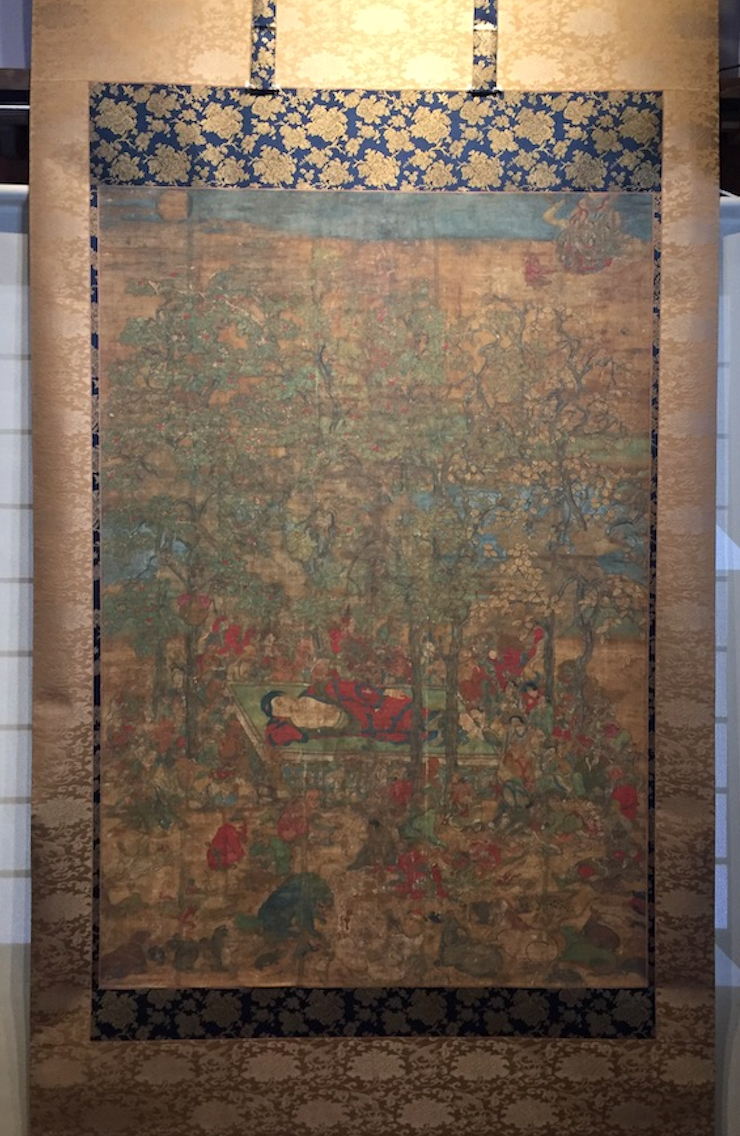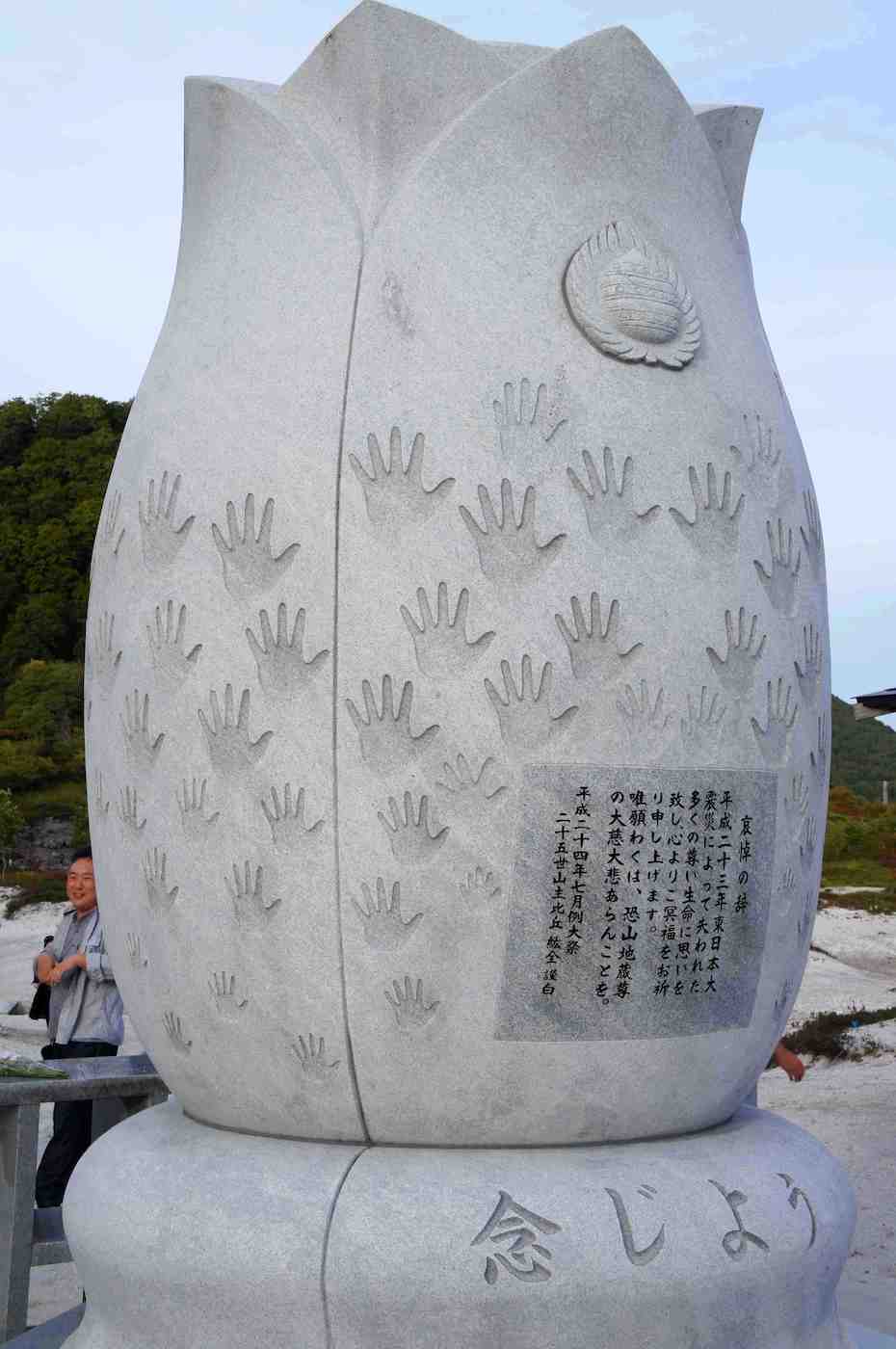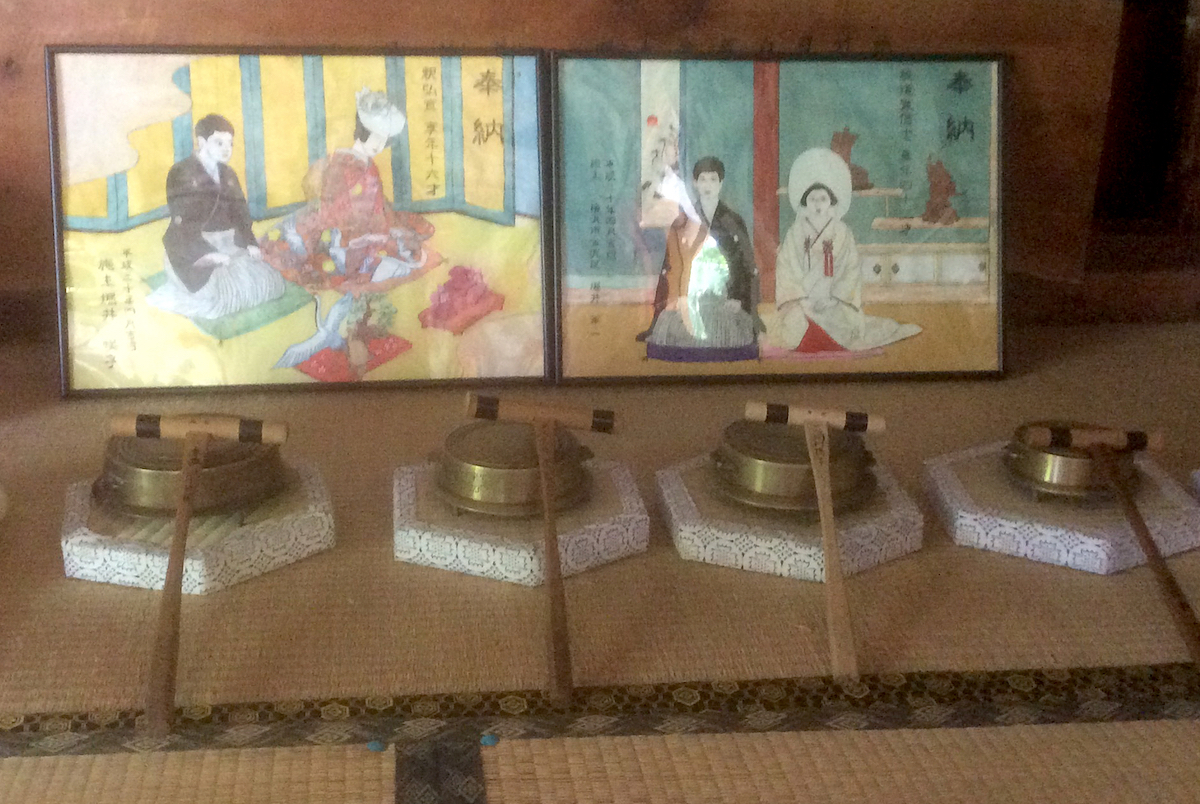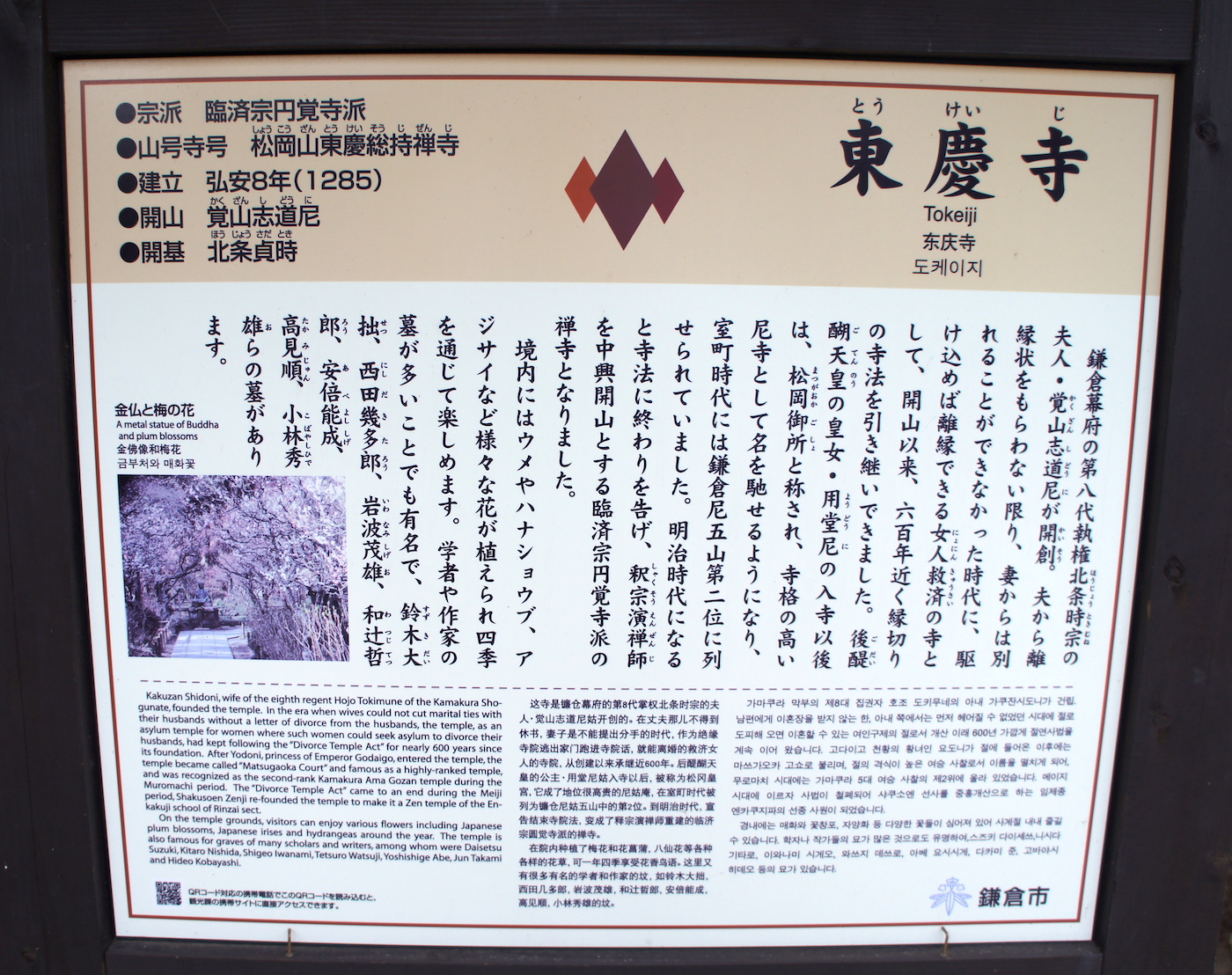FEATURES|COLUMNS|Buddhism in Japan
Another Kind of Pilgrimage
While I was wondering if I could find a connection between my assignment to report on Buddhism in Japan on the one hand, and the recent protests in the United States, on the other, I ran into an interesting exchange on social media. One person seemed to imply that the other’s support for the #BLM movement was not compassionate and, therefore, not Buddhist. While this claim itself raises a lot of questions, I would like to use this incident as a reason to revisit a movement that emerged in Japan some 35 years ago—a movement that linked the search for social justice with the question (definition?) of what is Buddhism: “Critical Buddhism.”
Critical Buddhism (Jap. hihan bukkyō) emerged as an intellectual movement in Japan in 1985, in response to a report of the doctrinal advisory committee commissioned by the Sōtō school of Zen Buddhism to investigate the potential involvement in and justification given to the systemic discrimination of the “buraku people”* in Japan by the institutions of Zen Buddhism. The report not only confirmed that Sōtō Zen Buddhist institutions in Japan were indeed guilty of systemic discrimination, but also claimed that the reliance on the doctrine of “buddha-nature” (Jap. busshō), dubbed as the “thought of original enlightenment” (Jap: hongaku shisō) rendered the representatives of Buddhism in Japan incapable of a critical attitude and, ultimately, ethical reasoning.

Scroll depicting the Buddha’s parinirvāṇa in Engaku-ji, Kamakura.
Photo by Áskell Jónsson
Borrowing the language of the Renaissance writer Giambattista Vico (1668–1744), buddhologist and Sōtō priest Hakamaya Noriaki differentiated between “critical Buddhism” and “topical Buddhism” (Jap: bashoteki bukkyō). The former describes early Buddhism, which, so Hakamaya posited, was conceived by the Buddha as a philosophy based on the notions of “no-self” (Jap: muga) and causality (Jap: inga). This philosophy was designed to critique what Hakayama identifies as the “nativist” tendencies of Hinduism in India, Daoism in China, and Shintō in Japan. Since it conflated its own inherent rationalism with Daoist intuitivism in China and with German idealism in Japan, Buddhism, so Hakamaya asserted, had lost its critical function and fallen into a quietism, resulting in the “neglect of words” (Jap: kotoba keishi) and the “departure from philosophical thought” (Jap: tetsugakuteki shisaku o shirizokeru),** becoming incapable of ethical reasoning. Hakamaya’s rather abstract philosophy is reflected by a number of Japanese Buddhists who, in the second half of the 20th century, went to Sri Lanka and Myanmar to rediscover a presumably true and authentic form of Buddhism. Even though Hakamaya started to investigate a very specific political issue, his philosophy raises a couple of fundamental questions, such as “is there a true form of Buddhism and, if so, what is it?” and “does Buddhism have an ethical responsibility to fulfill a specific political and social role?”

Memorial on Mt. Osore to commemorate the victims of 3/11, the
2011 Tōhoku earthquake and tsunami. Photo by the author
While Hakamaya and his colleagues raised a few exciting and surprising criteria for what it means to be Buddhist, namely ideological criticism and suspicion of political power, their discussion brings us to the question of what is Buddhism and who has the authority to define Buddhism. As a scholar of Buddhism, I am, of course, familiar with this question. First, there is the confusion and, often, conflation of the terms Buddhist tradition/s or Buddhist schools with Buddhist teachings, Buddhist practices, and Buddhist identities. While the meanings of these terms overlap, they are not identical; these terms are not synonyms. Then there is the question of how to define Buddhism. Hakamaya’s strategy to return to the teachings of the Buddha might seem promising, but he is rather selective when he identifies selflessness and causality as the defining criteria of Buddhism. Moral and doctrinal definitions of Buddhism are always normative and ideological, not descriptive, even when motivated by inspirational goals such as the abolition of discrimination; institutional definitions are exclusive; and identity claims subjective. Even textual definitions might be inconclusive as even a quick search in the Daizōkyō Database of the Buddhist canon reveals.
So what is Buddhism? Of course, I receive my inspiration from the Japanese Zen Master Dōgen. To use a term from the Buddhist canon, what is the “way of the Buddha” (Jap: butsudō)? Dōgen proclaims that “To study the Buddha-way . . . is to be actualized by the 10,000 dharmas.”*** An intensive reading of Dōgen’s main philosophical work Shōbōgenzō reveals that, to Dōgen, to follow the Buddha-way is to “express” the spatio-temporal totality of the cosmos and that each such “expression” is incomplete. Dōgen uses phrases such as “when one side is illuminated, the other is obscured.”*** Definitions of Buddhism, be they moral, doctrinal, institutional, textual, historical, or ideological, all illuminate one aspect of Buddhism and obscure another. “To study the Buddha-way” then is to embark on a lifelong pilgrimage since, as Dōgen remarks: “the enlightenment without traces expands forever.”** The teaching of the Buddha, then, is found, among other places, in compassion with the downtrodden and the oppressed, in temple art, in the meditation of a single practitioner, in the commemoration of the dead.
 Mukasari ema, pictures of postmortem weddings, at Kurotori Kannon, Yamagata Prefecture. Photo by the author
Mukasari ema, pictures of postmortem weddings, at Kurotori Kannon, Yamagata Prefecture. Photo by the author
This is why pilgrimages fascinate me. This is why I keep studying Buddhism and keep bringing colleagues and students from multiple countries to Japan. Pilgrimages have become immensely popular in Japan. There are multi-site pilgrimages and single-site pilgrimages. The most famous multi-site pilgrimage in Japan are the 88 places in Shikoku in honor of Kōbō Daishi (774–825),**** but there are multiple pilgrimages in honor of Kannon Bodhisattva and Fudō Myō’ō, respectively. In addition, there are smaller pilgrimages dedicated to the various founders of the Buddhist schools in Japan. Then there are single-site pilgrimages to places like Dainichibō, which enshrines Shinnyokai, one of only 16 monks who mummified themselves (Jap. sokushinbutsu), and Chūren-ji, home to the second famous sokushinbutsu Tetsumonkai, or Mt. Osore in Aomori prefecture.
To me, the notion of pilgrimage is even more extensive and expands beyond the canonized pilgrimage routes. I am on a pilgrimage whenever I see the teaching of the Buddha embodied, whenever I encounter Buddha. This can be at Jōdo-ji, which was destroyed in the 2011 Tōhoku earthquake and tsunami and rebuilt a few years later; at the divorce temple in Kamakura,***** which served as a safe haven for abused women in during the Edo period; at selected temples in the Tōhoku region, which enshrine mukasari ema, pictures of postmortem weddings commemorating those who died without ever being married; at Eihei-ji, where monks engage in meditation to resolve the “matter of life and death;” at Mt. Kōya, with its amazing art; or at any place where we face our “true nature” and encounter our common humanity—namely that which connects us all. To walk the buddha-way is to see the Buddha in everyone. And, sometimes, we need a pilgrimage to remind us of what it means to follow the buddha-way.
The history of Tōkei-ji, also nicknamed “Enkiri-dera” (“Divorce Temple”), in Kamakura.
Photo by the author
* Buraku people / burakumin: modern-day descendants of Japan’s feudal outcast community.
** Hakamaya 1990, 49–51.
*** DZZ 1:7.
**** Walking with Kukai–Becoming a Buddha: Pilgrimage in Shingon Buddhism (Buddhistdoor Global)
How to Face Death - Pilgrimages and Death Rituals in Japanese Buddhism (Buddhistdoor Global)
***** The Zen of Temples (Buddhistdoor Global)
References
Dōgen zenji zenshū (Complete Works of Zen Master Dōgen). Two volumes. Ed. Dōshū Ōkubo. 1969–70. Tokyo: Chikuma Shobō. [Abbr. DZZ]
Hakamaya, Noriaki. 1990. Hihan bukkyō [Critical Buddhism]. Tokyo: Daizō Shuppansha.
Related features from Buddhistdoor Global
Rarified, Recondite, and Abstruse: Zeami’s Nine Stages
Butsuzo in the 21st Century: Promoting the 1,400-year-old Japanese Tradition of Buddhist Sculpture on Social Media
Chef Focus: Toshio Tanahashi’s Foundation for Shojin Cuisine and Philosophy















